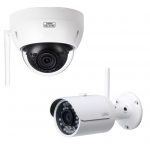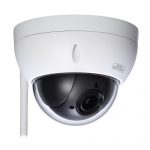
Our dedicated UK support team can provide support and advice for your Video Surveillance installations. If you have experienced technical issues or require the latest software please see the options below.
Quick Start Guides
Select your camera or system from the options below to view the set up guides.
Troubleshooting & Videos
Follow the guide below to change your default web browser to Internet explorer.
- Open the start menu and type default then select change default web browser from the list that appears. Or select default app settings.
- Now scroll to web browser
- Click and choose Internet explorer
What should I change my IP to? It should match the IP region of your cameras. If your cameras are connected to the router then you should look on your router label to find what it’s IP address is. If the cameras are not currently on a network then their default IP is 192.168.1.108 when connected direct to your PC.

-
- Go to control panel.
-
- Network and Sharing Center.
-
- Adapter Settings (left hand side).
-
- Right click ethernet if PC is wired to router or camera or right click WiFi if PC is connected to network by WiFi.
-
- Select change settings of this connection.
-
- Double click Internet Protocol Version 4 (IPv4).
-
- Tick use this IP address.
-
- Now type an IP with the same first 3 segments but different last segment, for example if connected direct to the camera which is 192.168.1.108 then set your Ethernet IP to 192.168.1.100.
-
- Set subnet mask as 255.255.255.0 and leave default gateway as it is.
-
- Click Okay on each window to close them.

Static IP can be configured directly in the camera, there is no need to change anything in your router.
- Open the camera web browser interface.
- Go to Settings > Network > TCP/IP.
- Select wire or wireless from the drop list depending on your set up.
- Click static.
- Click save.
If you are not using internet explorer then there may be issues with video plugins and as such viewing the camera feeds.
It is recommended that you install internet explorer.
If you are still having trouble on internet explorer with installing the plugins then you may need to add your device as a trusted site. Please see the ‘Adding a trusted site’ video to add a trusted site.
- Log in to the camera browser
- Go to settings > Network > SMTP
- Next run a web search for your email providers SMTP settings.
- Copy the server address and TLS port number.
- Enter your email account username and password, this is the account the email will come from so you may wish to create a new account just for the camera.
- Select the authentication as TLS if you used the TLS port.
- Enter the receiver address and click test.
If you have multiple cameras connected over your home WiFi then when streaming they will use a lot of the available WiFi bandwidth. Cameras are streaming when being viewed or recording.
You can reduce this negative effect by:
- Using SD card storage instead of NVR, SD card storage does not use bandwidth when recording.
- Wiring the cameras to the router rather than WiFi, again this will take them off the WiFi signal, available wired bandwidth is much higher.
- Reducing the resolution and frame rate of the cameras.
- Connect your PC to the same router as the NVR.
- Open the Network Settings menu of the NVR and note down the IP (also ensure it is set as static now so it does not change). Also note down the default gateway, TCP and HTTP port numbers.
- Now log in to your router, type the default gateway into your browser address bar.
- When logged into the router all brands are displayed different but look for the port forwarding options (this may be in the WAN menu).
- In the port forwarding menu add two new ports. Now enter the two port numbers with the IP address you wrote down earlier and set both to TCP.
- Now find the external IP, in Google type what’s my IP, write this number down.
- Now check the ports are not being blocked, go to canyouseeme.org type in your external IP and the test both ports numbers. They should be clear, if not contact your internet service provider.
- Now test the HTTP by typing the external IP into the web browser, it should bring you to the NVR login screen.
- Now set up DDNS, in the NVR go to Setup > Network > DDNS.
- Now enable, you do not need to enter your IP, create a custom domain name here that you will remember and save.
- Now test in the browser by typing YOURNAME.quickddns.com this should take you to the browser.
Frequently Asked Questions
For the BURGcam range a high performance micro SD card is recommended for high storage capacity.
For back up only storage (32Gb or less) you can get micro SD HC class 1 cards. This would be the case if you had a REC and wanted an SD card just in case the network goes down, it will then record to the SD card.
For main storage purposes 128Gb Micro SD XC class 10 cards are recommended.
All memory cards should be formatted as per the video on this page.
This is very dependent upon you full individual settings and positioning of the camera but a few examples all based on 20 frames per second:
Recording time can be increased by lowering the framerate (fps), lowering the resolution, unmarking the road from the motion detection area – it will still be recorded when motion is triggered but will not trigger the motion itself.
- 2 Cameras one overlooking a road/street and one in the garden, with REC and 1Tb storage, 3MP.
- Motion Detection Recording: Mix of low and high activity areas at high resolution would give at least 2 weeks of recording.
- 24/7 Recording: 7 days
- 2 Cameras one overlooking a road/street and one in the garden, with REC and 1Tb storage, 2MP(1080p).
- Motion Detection Recording: Mix of low and high activity areas at high resolution would give approximately 3 weeks of recording.
- 24/7 Recording: 10 days.
- Camera mounted overlooking a garden, 128Gb Micro SD, 3MP resolution.
- Motion Detection Recording: Low activity garden with high resolution would give 3 weeks of recording.
- 24/7 Recording: 2 days.
- Camera mounted overlooking a garden, 128Gb Micro SD, 2MP (1080p)
- Motion Detection Recording: Low activity garden with high resolution would give 5 weeks of recording.
- 24/7 Recording: 3 days.
- Camera mounted overlooking a road, 128Gb Micro SD card, 3MP resolution.
- Motion Detection Recording: Roads are high activity and the resolution is at the highest, on average this would give 7 days recording.
- 24/7 Recording: 2 days.
- Camera mounted overlooking a road, 128Gb Micro SD, 2MP (1080p).
- Motion Detection Recording: High activity road would give approximately 11 days of recordings.
- 24/7 Recording: 3 days
192.168.1.108
It is recommended that Internet Explorer is used when accessing the cameras as it is fully supported for video plugins. Other browser may work with additional apps but these are not recommended by Burg Wachter UK.
However you can also use Chrome but must install the NACL plug in:
https://chrome.google.com/webstore/detail/nacl-web-plug-in/pbdcmagkbhnjpjlnpibbmggikpedpilc/related
Once installed it will open a new window, this is the one which will display the cameras so pin it to the taskbar for later access.
If you are not using internet explorer then there may be issues with video plugins and as such viewing the camera feeds.
It is recommended that you install internet explorer.
However you can also use Chrome but must install the NACL plug in:
https://chrome.google.com/webstore/detail/nacl-web-plug-in/pbdcmagkbhnjpjlnpibbmggikpedpilc/related
Once installed it will open a new window, this is the one which will display the cameras so pin it to the taskbar for later access.
There could be two reasons for this:
- You may be looking in the wrong place.
- If you have a system with a recorder installed then the cameras will record to that. As such if you are connected to the camera direct (either P2P app or web browser) then there will be no playback as the playback in on the recorder.
- Nothing has been recorded.
- If you are using stand alone cameras with Micro SD cards and still see no playback then please check the SD card function and format if necessary. (follow the Format your SD card troubleshoot).
- If it shows no SD card then check that it is correctly inserted.
- If still not working there may be an SD card fault, if so please return the SD card to the SD card supplier, Burg Wachter UK do not accept liability based on faulty SD cards.
Yes,
The best way to do this is to first connect the camera and booster both to the main network before mounting the camera.
Now with a Windows PC connected to the same router run the IP Tool from the disc in the box to find the camera IP.
Now log into the camera IP by typing it in the address bar of internet explorer. Install the plug ins when it asks. Log in with username admin and password 9999.
If the language is in German you can select English in the top right of the screen. Now go to Settings>Network>WiFi. Here you can select the booster form the list and connect direct.
Now mount the camera and place the booster and they will connect.
Downloads
This tool will search your current network for any connected BURG Wachter cameras or recorders.
This will allow you to view the cameras on internet explorer if it did not download automatically.
Download HERE








